3-strand rope splicing is not only a fundamental skill in fisheries but also a crucial factor for safe and efficient fishing boat operations. With proper splicing techniques, fishermen can reduce handling time, minimize the risk of rope slippage or breakage during anchoring, and extend the durability of their rope systems. In this article, SIAM Brothers VN provides a step-by-step guide on how to perform 3-strand rope splicing, along with safety tips and practical experience, so you can handle emergencies directly on board. Discover now how to save time, ensure safety at sea, and cut long-term costs.
1. What is 3-strand rope splicing and its role in fisheries?
Simply put, 3-strand rope splicing is the technique of weaving and securing the rope end to form a strong eye loop, usually applied to ropes constructed with three twisted strands. This essential skill helps fishermen:
- Join ropes or create safe loops for anchoring boats and attaching nets.
- Strengthen connection points, reducing the chance of rope slippage or fraying under heavy loads.
- Maintain rope durability and extend lifespan, minimizing damage during operations.
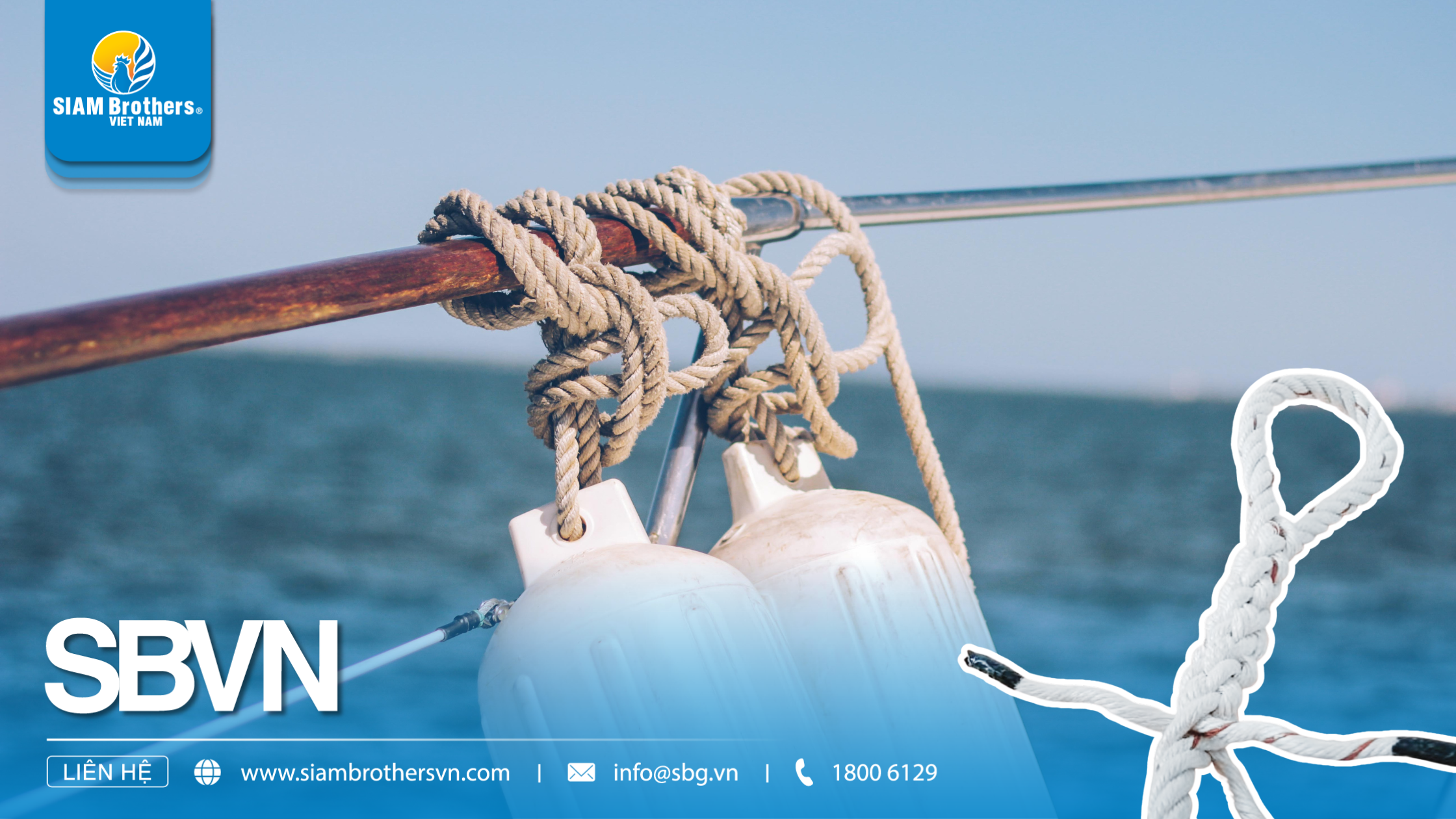
1.1 Why should fishermen know 3-strand rope splicing?
In real-world fishing operations, this technique provides many practical benefits:
- Safe boat operations: A secure splice ensures anchoring, net hauling, and cargo fastening without rope failure.
- Time-saving repairs: Knowing how to splice directly on board helps resolve rope issues quickly, avoiding trip delays.
- Cost efficiency: Instead of frequently replacing ropes, you can splice damaged ends and continue using them.
- High versatility: Applicable to various 3-strand ropes made of PP, PE, or Nylon, suitable for different fishing needs.
1.2 Practical value in fisheries
A properly executed splice not only helps fishing boats operate stably but also safeguards fishermen’s safety at sea. For this reason, mastering 3-strand rope splicing is considered a foundational skill every professional fisherman should know.
2. Preparation before 3-strand rope splicing
To successfully perform 3-strand rope splicing for fishing boats, proper preparation is key to saving time and ensuring safety during operations:
2.1 Check rope condition
-
Ensure the 3-strand rope is not frayed, broken, or degraded.
-
Use ropes that meet quality standards with clear origins for better durability and safety.
- A sharp knife or scissors for neat rope cutting.
- Tape, twine, or tools to hold rope strands during splicing.
- Protective gloves to improve grip and avoid slipping.
2.3 Identify the splicing position on the boat
- Choose a strong and load-bearing point for optimal anchoring, tying, or net hauling.
- Ensure the workspace is clear and spacious for smooth operations.
2.4 The operator
- The person performing must have experience or be properly trained in 3-strand rope splicing.
- For larger vessels, an assistant can help save time and improve safety.
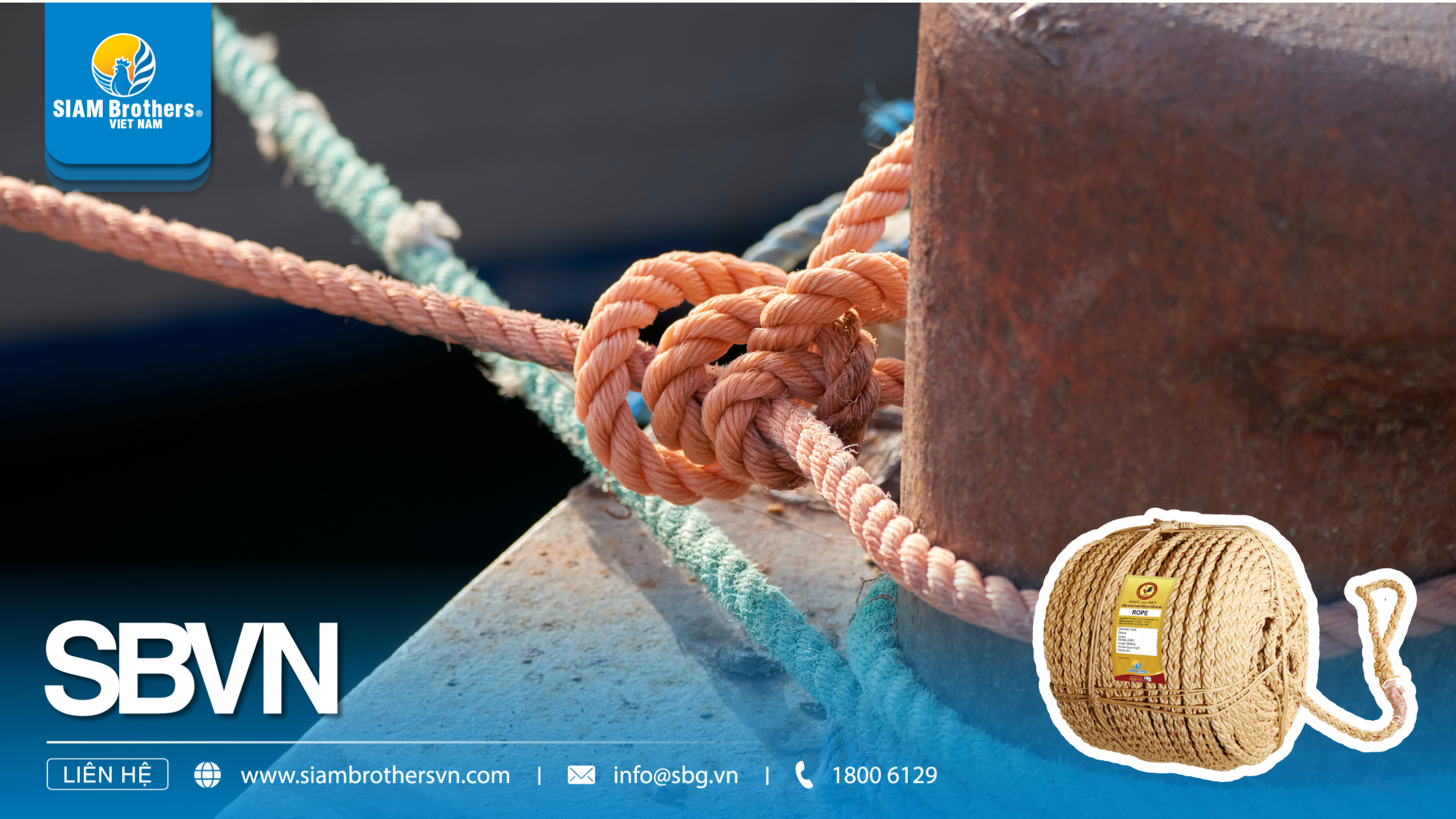
3. Step-by-step guide to 3-strand rope splicing
Step 1: Prepare the rope and tools
- Cut the rope end neatly, removing frayed strands.
- Wrap tape around the end to prevent unraveling.
Step 2: Separate the strands
- Divide the rope into three individual strands of adequate length.
- Keep strands untwisted for easier weaving.
Step 3: Create the initial anchor point
- Place the rope to be spliced parallel with the main rope.
- Pass the first strand through the gap between the main rope’s strands to lock it in place.
Step 4: Weave the remaining strands
- Insert the second strand into the next gap, slightly offset from the first.
- Insert the third strand into the remaining gap, forming a secure interlock.
Step 5: Tighten and adjust
- Pull each strand evenly to balance the splice.
- Use hands or tools to press the strands firmly into the main rope.
Step 6: Finish the splice
- Trim excess rope, then secure with tape or twine.
- Inspect the splice carefully to ensure no loose strands remain.
With these detailed instructions, you now have the essential knowledge to perform 3-strand rope splicing effectively. This not only optimizes your working time and reduces risks but also extends rope durability for long-term use in fishing operations.
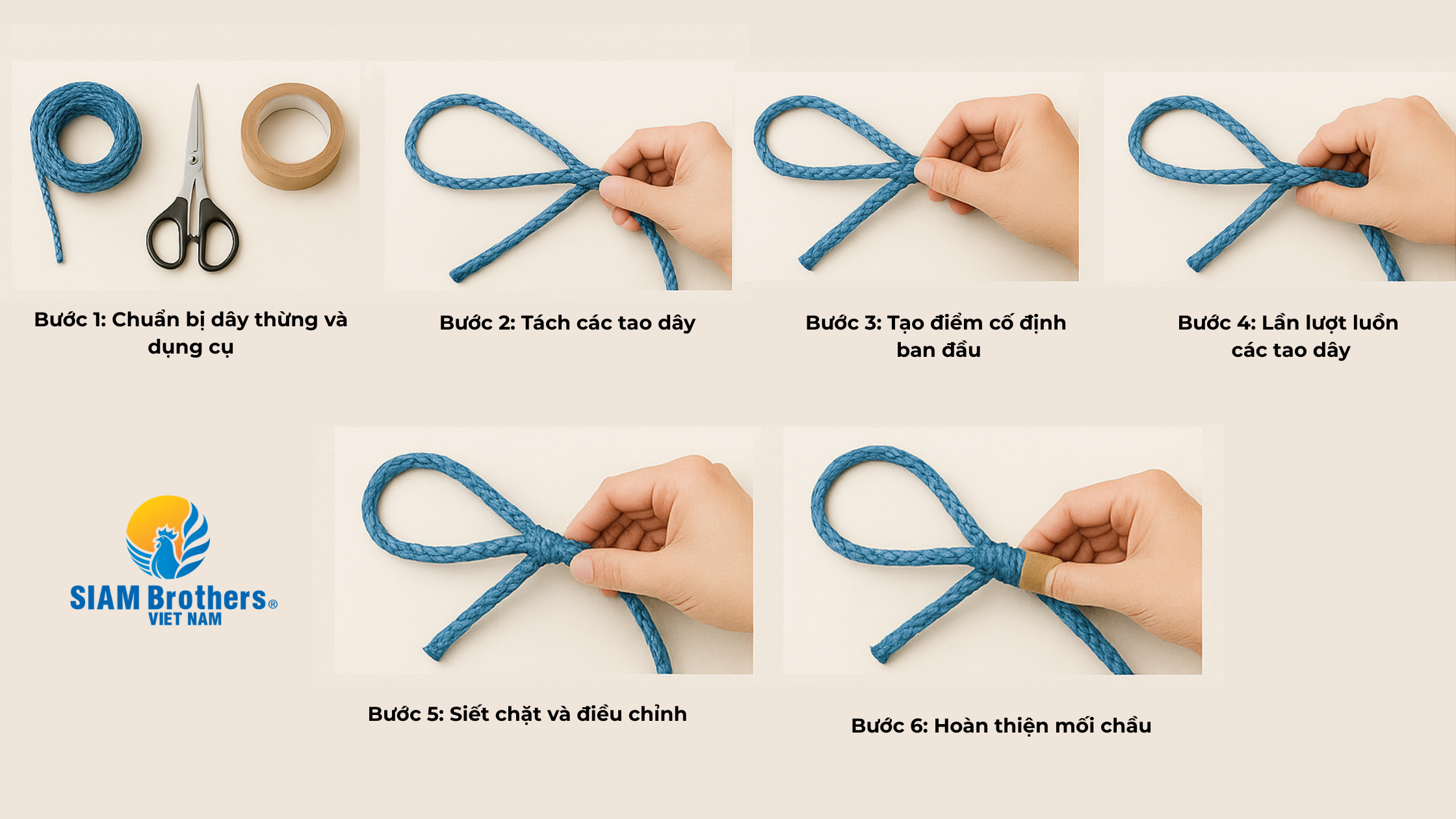
4. Benefits of Proper 3-Strand Rope Splicing
4.1 Ensures Strength and Safety
- A secure splice prevents rope slippage or breakage during net hauling and anchoring.
- Reduces accident risks for crew members in rough seas and strong winds.
4.2 Saves Time and Effort for Fishermen
- With correct 3-strand rope splicing, handling time is significantly reduced.
- Fishermen can easily check and maintain ropes without dismantling complex parts.
4.3 Extends Rope Lifespan
- Minimizes friction, preventing fibers from fraying or wearing out too soon.
- Allows ropes to last longer, reducing replacement costs.
4.4 Optimizes Fishing Efficiency
- Strong and stable splices improve net handling, anchoring, and equipment security.
- Enhances productivity and overall performance for fishing operations.
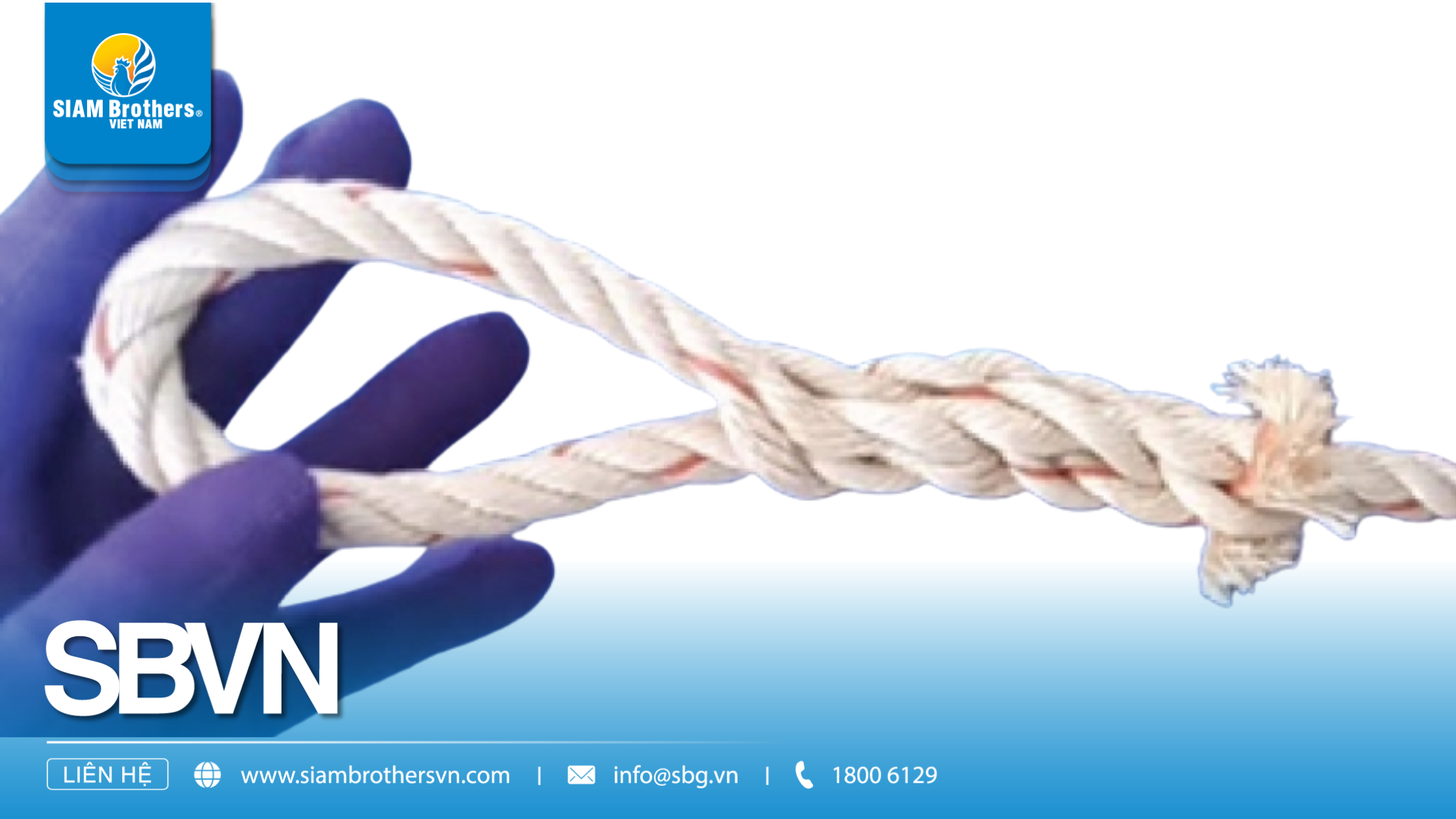
5. Common Mistakes & How to Fix Them in 3-Strand Rope Splicing
5.1 Uneven Splicing
- Cause: Strands inserted incorrectly, not following the original twist.
- Result: Loose splice, prone to slipping under heavy load.
- Solution: Insert each strand along the rope’s natural twist, checking after every step.
5.2 Incorrect Rope Length Cutting
- Cause: Cutting strands too short or too long compared to technical requirements.
- Result: Short strands slip easily, long strands become bulky and harder to handle.
- Solution: Always leave at least 30–40 cm of each strand before splicing.
5.3 Loose Tightening of Strands
- Cause: Not applying enough force when pulling strands tight.
- Result: Splice shifts under load, reducing safety.
- Solution: Apply even force and test with strong pulls after finishing.
5.4 Skipping the Rope-End Securing Step
- Cause: Forgetting to burn or tape the rope end after completion.
- Result: Ends unravel, weakening the splice.
- Solution: Use heat or professional-grade tape to secure rope ends immediately.

6. Time-Saving & Safety Tips for 3-Strand Rope Splicing
- Always check knives, scissors, tape, and heat sources (torch, lighter) before splicing.
- Good preparation ensures smooth, uninterrupted work.
6.2 Splice Under Favorable Conditions
- Choose a well-lit, stable surface for splicing.
- Avoid working when the boat is rocking heavily to reduce mistakes and injuries.
6.3 Mark the Rope Twist Before Splicing
- Use a marker or paint to indicate the twist direction of each strand.
- Prevents errors and ensures accurate splicing.
6.4 Apply the “Double-Check” Technique
- After completion, pull the rope firmly to ensure the splice is tight.
- This habit builds confidence before heading offshore.
6.5 Follow the “3 Quick-Step Rule”
- Insert in the right direction – Tighten evenly – Secure rope ends.
- A simplified yet reliable method to save time while ensuring safety.
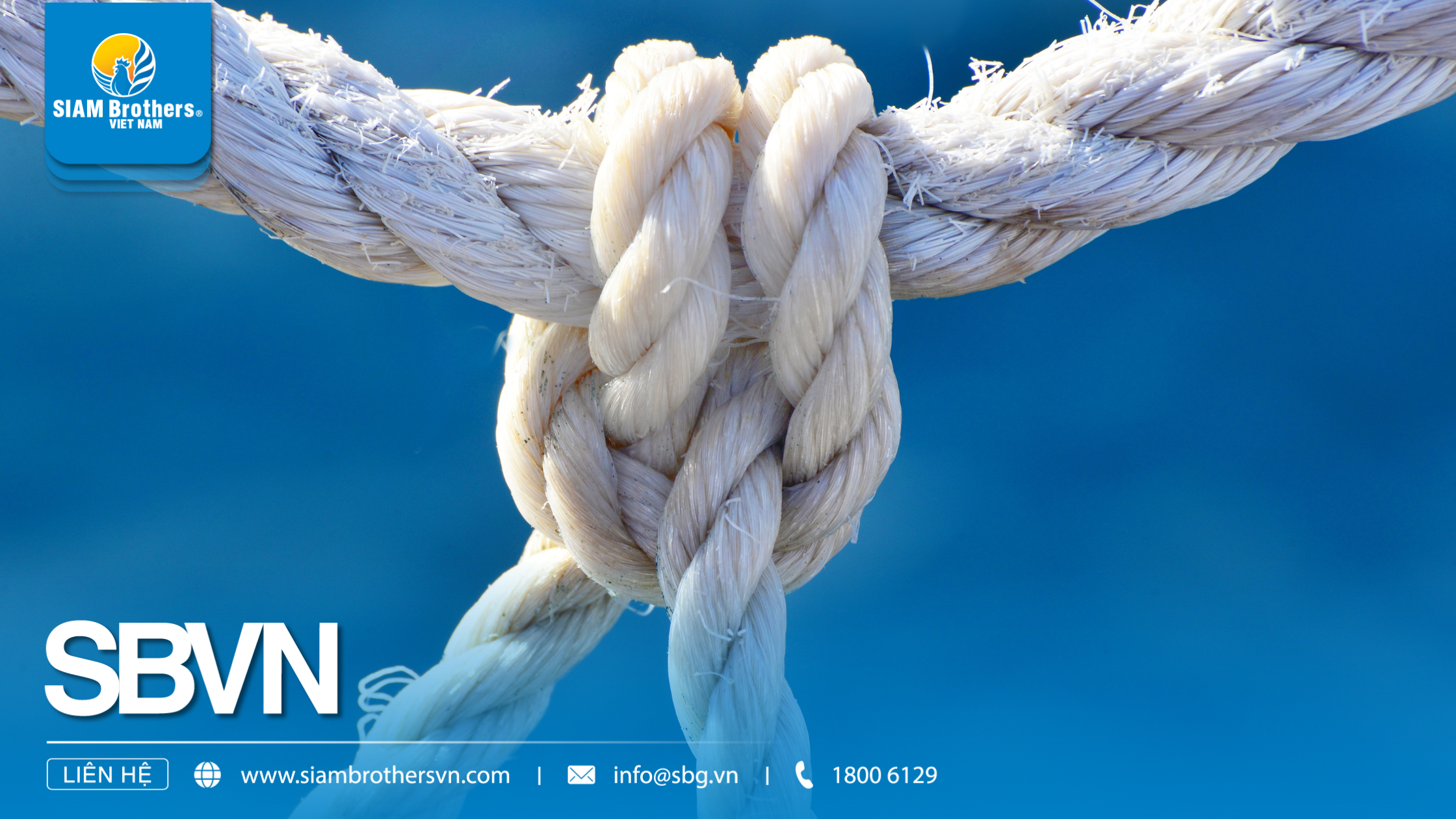
7. FAQs – Frequently Asked Questions About 3-Strand Rope Splicing
7.1 Is 3-strand rope splicing difficult?
Not really. It requires precision and correct technique, but once you master the process, it becomes quick and effective.
7.2 What type of rope is best for 3-strand splicing?
High-quality ropes with uniform strands and strong load capacity are ideal. For fisheries, PP or PE ropes are preferred due to durability and saltwater resistance.
7.3 How long does 3-strand rope splicing take?
With proper preparation and technique, the process usually takes only 10–15 minutes.
7.4 When should you re-splice a 3-strand rope?
When the rope shows fraying, loose splices, or after extended use. Re-splicing ensures safety and prevents failures during operations.
7.5 Can 3-strand rope splicing be used outside fisheries?
Yes. Beyond fishing boats, it’s widely applied in agriculture, mooring platforms, construction, and outdoor activities that require strong, reliable rope connections.
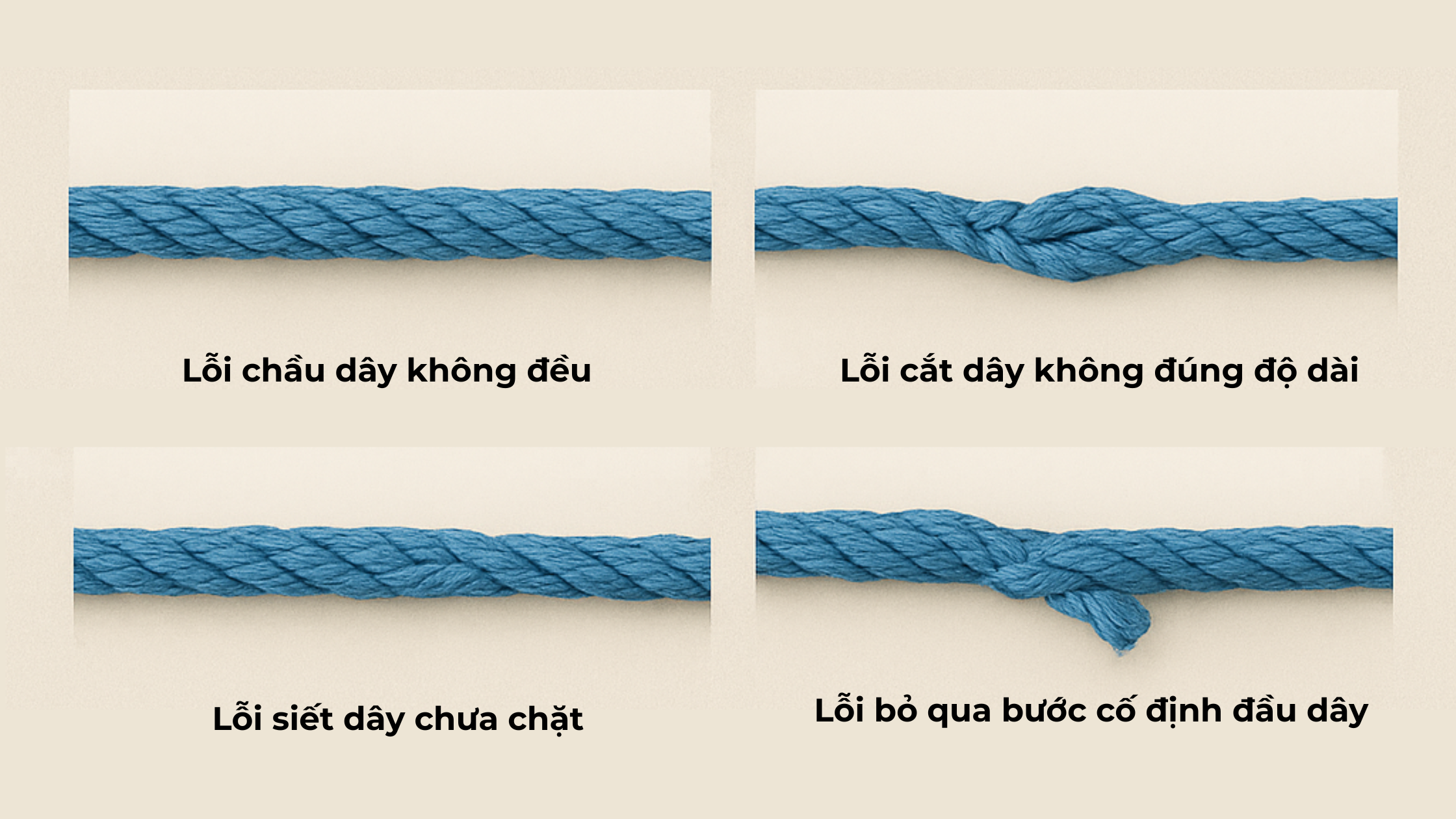
Mastering 3-strand rope splicing with the right technique allows fishermen to save handling time while ensuring safety at sea. From tool preparation, precise step-by-step execution, to error correction and smart tips, every detail contributes to longer rope lifespan and better fishing efficiency. With just a few correct moves, you can reduce risks, increase productivity, and protect your crew. For high-quality ropes designed for fisheries and multipurpose use, visit SIAM Brothers Vietnam today for expert consultation and the right products for your needs.
Source: SIAM Brothers Vietnam
Contact us:
► Address: 5th floor, VRG Building, 177 Hai Ba Trung Street., Xuan Hoa Ward, Ho Chi Minh City, Vietnam
► Hotline: 1800 6129
► Tel: (+84) 28 38 912 889
► Email: info@sbg.vn
► Follow us for more details at: Facebook - Zalo OA - Tiktok - Youtube - LinkedIn
Download SBVN ID app here:
► CHPlay
► Appstore








